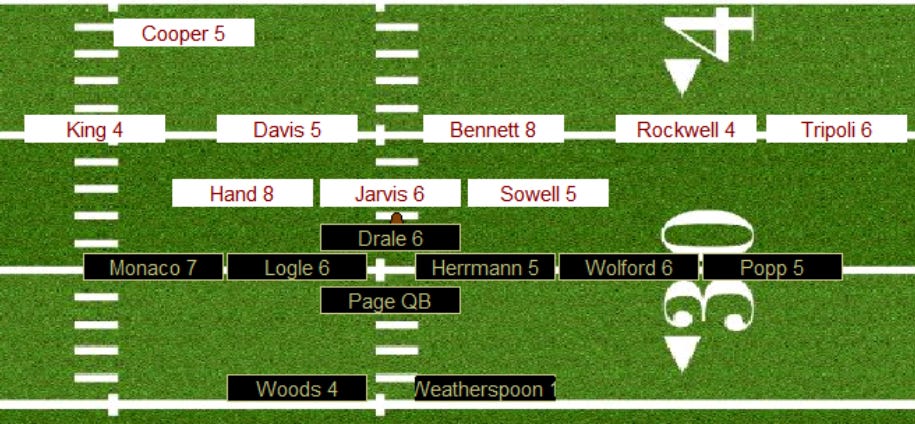Running in Action PC Football
Unfortunately, as I write this post, the Action PC Sports forums appear to be down. There was a thread in the Football forum from a few months ago that I wanted to address.
It was about running in the football game, and ideas for coming up with more realistic results.
I won’t get too deep in to the insinuations in the thread that the computer somehow treats CPU controlled teams differently than user controlled teams. One thing I do want to say, however, is that you should think of ways to create a running game for your star running back.
My current project involves a reorganized 1980 college football season. Fortunately, most college teams in 1980 had a running focused attack, which gives me some ammunition for this topic.
My current game is Alabama at Vanderbilt, and I’m controlling Vanderbilt. Now, as you can imagine, Vanderbilt doesn’t necessarily have much of a chance in this one.
We’ve got two starting running backs. One is Carl Woods:
And the other is Kenny Weatherspoon:
Now, I can tell you right off the back that Weatherspoon must have been injured at some time in 1984, and that the fatigue system likely won’t let me use him all that much. His backup will be Everett Crawford:
Now, ideally we want to figure out a way to give most of the runs to Woods — but we want to give him a chance to have success as well.
This is where I think most people who play this game make a mistake. You’re not going to get very far by just running it with Woods every other down.
First, you want to look at your blocking matchups. This is what the box looks like:
Alabama has decided to stick 3 guys on our strong side, showing a possible man to man setup. Hand has an advantage over Logle at left guard, which tells me that we probably want to try for an off tackle run or a sweep if we go to the left side.
Basically — any inside running play should generally go to the right to take advantage of the slight blocking edge we have, and anything outside should probably go to the left.
Now, if you take a look further out, you’ll see that we have another advantage: the passing game.
Scott and Edwards both have an advantage over their respective corners. Woods is actually a pretty good pass receiver (the numbers next to the running backs are receiving ratings), and Popp isn’t bad at tight end, either.
In general, the idea here is to try to get the computer to look for the wrong guy — or even the wrong play. In theory, we could probably do well by starting off with a trap run with Weatherspoon on the right, and then follow it up with either a quick pass to a receiver or a counter run with Woods.
It’s hard to say exactly what the right strategy is. However, this gives you at least some idea of what to look for.
Long story short: if you want to set things up for your running back, you need to think of a way to get the computer to not expect that you’re going to do what you’re going to do. It’s less a game of playing with yards per carry percentages, and more a game of wits.








